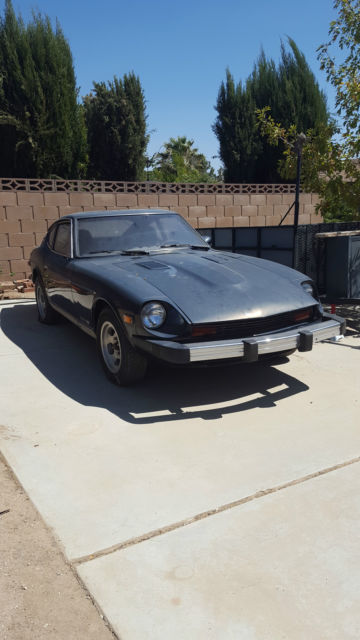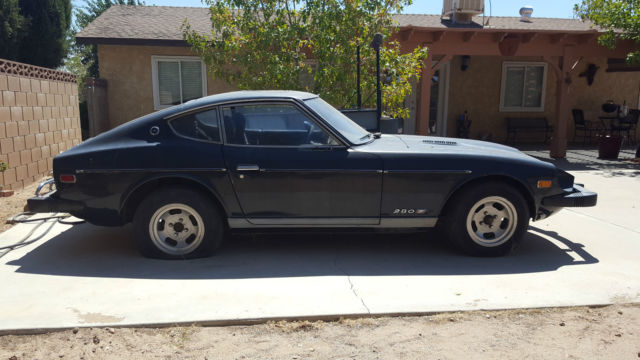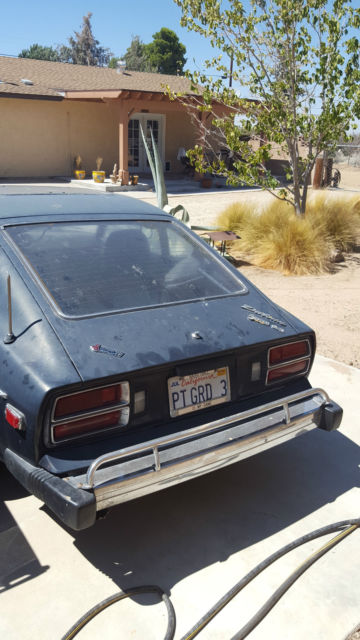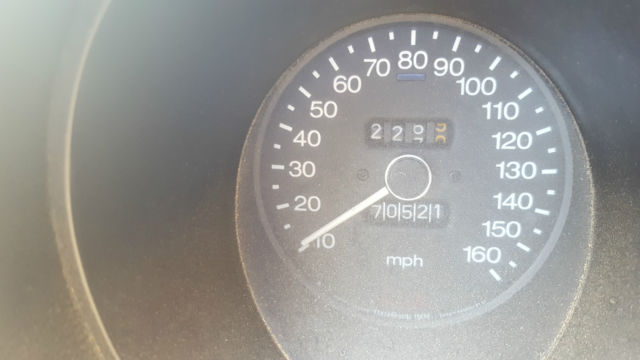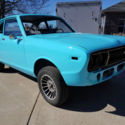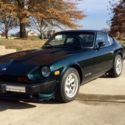1978 Datsun 280 Z Restoration Ready
| Make: | Datsun |
| Model: | Z-Series |
| Type: | Hatchback |
| Year: | 1978 |
| Mileage: | 70,521 |
| VIN: | HLS30-401599 |
| Color: | Blue |
| Engine: | 2.8 L L28E I6 |
| Cylinders: | 6 |
| Fuel: | Gasoline |
| Transmission: | Manual |
| Drive type: | RWD |
| Interior color: | Black |
| Vehicle Title: | Clear |
| Item location: | Palmdale, California, United States |
1978 Datsun Z-Series Additional Info:
I am forced to sell my 1978 Datsun 280Z, since work has forced me to relocate out of state. The car has not run for over 15 years and has been garaged at family home in Palmdale, CA. No major bodywork is needed, other than a fresh paint job and interior repairs to bring this classic back to today's prices of upwards to $6-10,000.00 This is a project car, however all the pieces are intact for an easy restoration, especially for a first-timer. Motor's are easily rebuilt or replaced as this was a popular car and fresh rebuild motors can be found in So. California for around $2,500.00. Numerous suppliers have other performance parts, so you can upgrade this car as you like. Below is a good article on why the 78 Z is a good candidate for restoration.History of the 1975-1978 Datsun 280Z
Datsun’s brilliant 240Z was really the car that its designers wanted it to be for just the first two years of its four-year run. By 1972, emission controls had started to affect drivability and by 1973, the Z was not quite the driver’s car it had originally been. The carbureted 1974 260Z, (which gave a 200 cc bump in displacement) was only a stopgap solution.
The real solution to emission laws came with the introduction of the fuel injected 280Z in 1975. The addition of a license-built Bosch L-Jetronic injection to the inline six-cylinder engine, plus a displacement increase of 200 cc, returned the Z car to roughly 1970 levels of performance. The 280Z would have performed even better had federal impact bumpers and additional equipment like air conditioning not added weight.
All things considered, however, the 280Z is much closer to the original 240 than most people realize and it’s certainly a more sporting car than the 280ZX of 1979, with which it is often confused. Aside from the big bumpers, the coupe is a direct descendant of the 240Z, with little changed in the interior except for a fully integrated and effective air conditioner which replaced the original Z’s dealer installed piece. The electronic fuel injection makes cold starts a snap and offers excellent drivability. A five-speed transmission became available in late 1977 but most 280Zs are four-speeds with the occasional automatic showing up most commonly on the stretched 2+2 model.
The earlier cars might be slightly more desirable with better colors and simpler bumpers, and often carry a slight premium in price. Plastic wheel covers were a carryover from the 240Z and 260Z with 1977 and 1978 cars receiving a nicer design. Factory alloy wheels are rare.
Any Z is a mechanically simple and robust car with good parts availability, and a lot of fun to drive. Bodies that are especially rust-prone are the Z cars Achilles heel, but high production numbers mean that there are still plenty of rust-free examples available. All of these factors help keep Datsun 280Z values in the affordable range, and make the car a great candidate for an entry-level collectible car.
For current values, see Hagerty's website.
